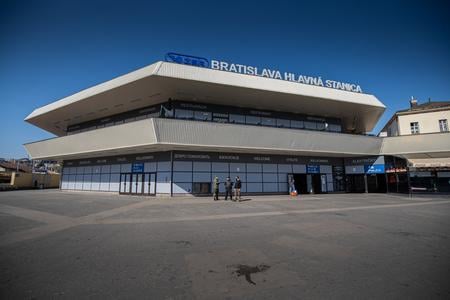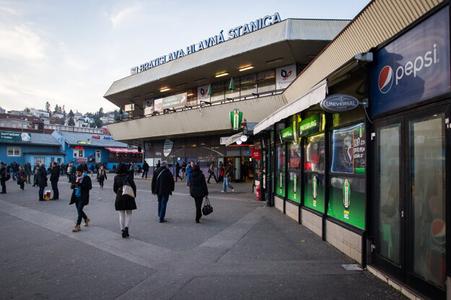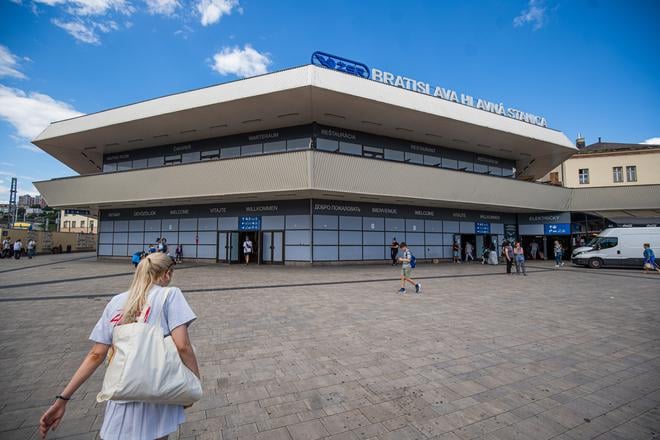Bratislava Main Railway Station has long been a source of embarrassment for the city – not to mention the country: for many visitors it is the first, somewhat sobering, glimpse of urban Slovakia that they get – and is in urgent need of a major overhaul. Since it first opened in the late 19th century it has undergone only minimal modifications, and transport experts and urban planners have long said that, in addition to renovation, a forward-looking vision is needed.
Ivan Bednárik, the newly appointed director of Železnice Slovenskej Republiky (ŽSR) – the state-owned company which operates Slovakia's railway infrastructure, including Bratislava Main Station – acknowledges that resolving the station’s issues is primarily a financial challenge. From his perspective, relocating the current station or expanding it is not feasible.
“We have no way of extending the station’s track area, as the surrounding land is owned by various parties, and doing so would infringe upon property rights,” Bednárik told the Pravda daily. “The terrain is also problematic, as the tracks are built on a slope. Therefore, increasing its capacity from this perspective is not possible.”
Both ŽSR and the city council have plans to improve the station. However, a refurbishment approved by the Transport Ministry in October last year is regarded as merely a cosmetic, partial solution.
Nevertheless, Bednárik considers the reconstruction of the building a priority.
“We will also be holding discussions with the Transport Ministry about what exactly the renovation will include,” he promises, estimating the budget at €30 million. “There is currently no tender announced for the contractor; we are in the final stages of preparing documentation for the design tender. The plan is to complete the renovation by 2028.”
(Mal)functional?
The station building has essentially stood in its current location since 1871; a vestibule and the current facade was added in 1989. This extension is often criticised – not only for its appearance, but also for its lack of functionality. One common question is why the building was not designed with more floors, which would have improved conditions, particularly for passengers. The situation is worsened by the poor state of the commercial outlets within the station: some are neglected, the rest are scattered throughout the premises thanks to its incoherent layout.

According to Peter Martinko, a transport expert and a contributor to an exhibition about Bratislava’s plans for a metro, the state has been addressing the station’s shortcomings for the past 40 years, but to little evident effect. He considers the most promising concept to be one proposed in the late 1980s, which aimed to relocate the station approximately 300 metres south-east of its current position. The proposed site would have been bordered by Šancová, Žabotova and Karpatská Streets, with the main entrance from Dobšinského and Palárikova Streets.
However, the project would have required extensive demolition on land that the state failed to acquire in time. Today, the cost would be astronomical, and the legal processes – including compulsory purchases and evictions – would take years.
Given the current location of the station building, the track infrastructure, and the general characteristics of the area, all relocation plans have long since been abandoned. Yet the daily number of passengers – and trains – is expected to increase, placing pressure on already limited infrastructure.
“The main railway station currently allows for three-minute boarding and three-minute disembarkation of passengers, and that will remain the case,” said Bednárik. “But let’s not imagine that this creation of our forebears – in its current location and form – can handle passenger growth over the next 20 years. It won’t be sufficient, which is why we’re looking for an alternative through the modernisation of the entire Bratislava railway hub.”
New Stupava station will aim to ease the pressure
Not only express trains, but also regional services are currently required to pass through the main station. As a result, capacity is already strained. The Bratislava East and Bratislava West projects aim to modernise the city’s railway hub. The eastern project involves upgrading the lines through the suburbs of Rača, Vajnory and Nové Mesto, with the goal of increasing capacity, speed and safety.
The western project proposes the construction of a new station near the town of Stupava – about 20 kilometres from the centre of Bratislava, in the neighbouring Záhorie region – that would be intended primarily for high-speed trains and to relieve the main station of freight transit. A train maintenance centre is also planned to be relocated there.
“The new Bratislava West station near Stupava will serve as both a terminus and a departure point, with undeveloped land available next to the motorway,” said Bednárik.
That is where trains to most of the rest of the country would begin and end their routes. It would be used for cleaning, toilet maintenance, crew changes and resupply. Trains would then turn around and continue back through Bratislava’s main station and beyond, he explained.
The MIB’s plans
The Metropolitan Institute of Bratislava (MIB), an architecture and urban planning quango that works with the city council, also examined ways to improve the capital’s railway hub in 2019. Its study proposed upgrading tracks and stations – including the main station – improving connections between regional, urban and long-distance transport, and integrating public transport. The estimated cost exceeded €1 billion, with €350 million earmarked for modernising Bratislava’s main station. None of the plans were implemented.

A more modest proposal was presented by the MIB in 2021. However, the suggested changes were only temporary. They included replacing damaged pavements and surfaces in front of the station. Benches and bins – either missing or vandalised – were to be added.
The plans also included the expansion of the municipal public transport boarding island, especially for wheelchair users and parents with prams. A key feature was to have been the installation of guidance systems for blind and visually impaired people, who, like those with limited mobility, are particularly at risk within the station. However, the state abandoned the plan.


